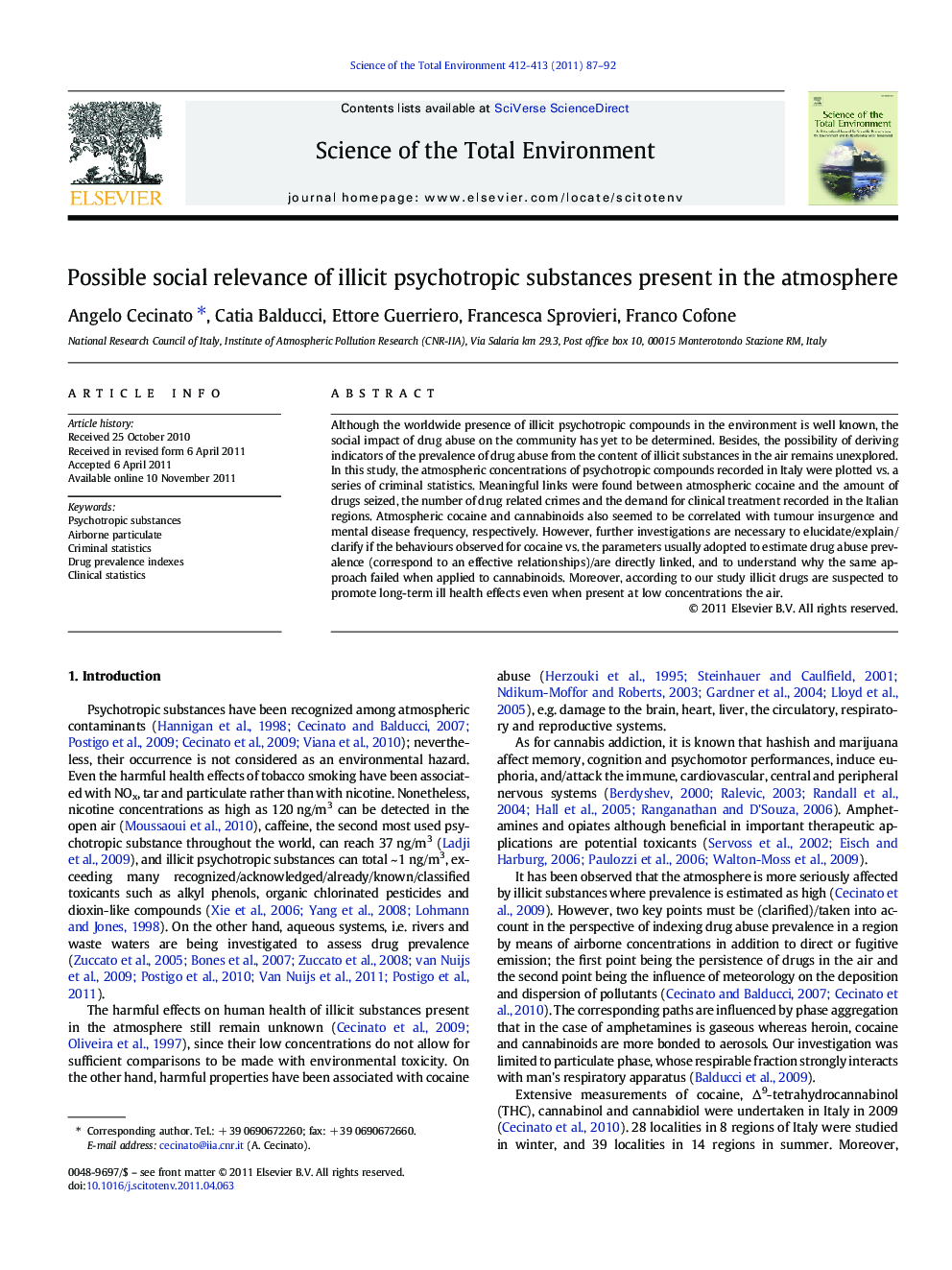| Article ID | Journal | Published Year | Pages | File Type |
|---|---|---|---|---|
| 4429701 | Science of The Total Environment | 2011 | 6 Pages |
Although the worldwide presence of illicit psychotropic compounds in the environment is well known, the social impact of drug abuse on the community has yet to be determined. Besides, the possibility of deriving indicators of the prevalence of drug abuse from the content of illicit substances in the air remains unexplored. In this study, the atmospheric concentrations of psychotropic compounds recorded in Italy were plotted vs. a series of criminal statistics. Meaningful links were found between atmospheric cocaine and the amount of drugs seized, the number of drug related crimes and the demand for clinical treatment recorded in the Italian regions. Atmospheric cocaine and cannabinoids also seemed to be correlated with tumour insurgence and mental disease frequency, respectively. However, further investigations are necessary to elucidate/explain/clarify if the behaviours observed for cocaine vs. the parameters usually adopted to estimate drug abuse prevalence (correspond to an effective relationships)/are directly linked, and to understand why the same approach failed when applied to cannabinoids. Moreover, according to our study illicit drugs are suspected to promote long-term ill health effects even when present at low concentrations the air.
► Cocaine affecting air modulates according to illicit psychotropic substance seizures. ► Airborne cocaine is proportional to drug-related crime numbers and treatment demands. ► Atmospheric cocaine is suspected to contribute to tumour insurgence. ► Cannabinoid burdens in the air seem to fit with mental disease frequencies.
